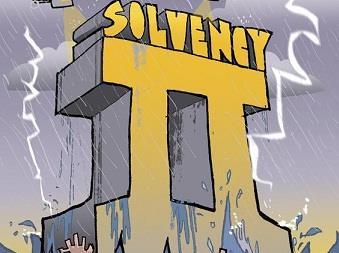Deloitte survey finds 60% have increased sophistication of approach

More than half of insurers are planning to change their approach to Solvency II, according to the latest research by Deloitte.
The business advisory firm’s annual report revealed that 51% of respondents intend to make a shift in their capital adequacy requirements calculations.
This comes in a week when EIOPA (European Insurance and Occupational Pensions Authority) released its bi-annual stability report which raised concerns that insurers’ solvency was deteriorating due to persistently low interest rates and market unrest caused by the eurozone debt crisis.
The European regulator said that despite Europe’s top 20 insurers being in good overall financial health with average capital reserves running at 200% of the required minimum, solvency ratios have “started slightly to decrease”.
The implementation date for Solvency II for insurers is scheduled for 1 January 2014.
Under the new Solvency II rules insurers can adopt an internal risk model or a standard formula to calculate their capital adequacy requirements. Internal models may be more expensive to implement, but can give firms a clearer picture of their risk and reduce their capital requirements.
Deloitte’s report, which was conducted by the Economist Intelligence Unit, found that of those insurers planning to change their strategy, 60% have increased the sophistication of their approach, and 37% were switching from a partial internal model to a full internal model, while 23% have moved away from the standard formula approach.
However, 40% of those changing their approach have opted for a simpler method, with 10% shifting from a full internal to a partial internal model, 13% moving from a partial internal model to a standard formula and 17% from a full to a standard model.
Last year’s survey found that half of respondents had decided on a full internal model approach, 30% a partial internal model and 20% a standard formula.
Deloitte’s lead Solvency II partner Rick Lester said: “Insurers use internal models if they believe they are a better reflection of their risk profile than standard models. There is a cost to adopting them, but there are also potential benefits because they can give a better understanding of risk, which should enable better business decisions and may ultimately lead to lower capital requirements.”
Distinct Business Consulting managing partner Jeremy Riley said: “Notwithstanding the difficult trading conditions, the changing requirements and time lines, together with the associated costs, I think it’s fair to say the market has been resilient in its determination to respond professionally to Solvency II, which is a very far-reaching regulatory programme.
“The pillar three future reporting standards still remain unclear and further guidance and clarity is needed to understand the full impact and plan for implementation.
“I think the more pressing issue for the industry is how changes made as a result of Solvency II translate into a ‘business as usual’ environment and become embedded in the ongoing management and oversight of the day-to-day business.”
Hosted by comedian and actor Tom Allen, 34 Gold, 23 Silver and 22 Bronze awards were handed out across an amazing 34 categories recognising brilliance and innovation right across the breadth of UK general insurance.













































No comments yet